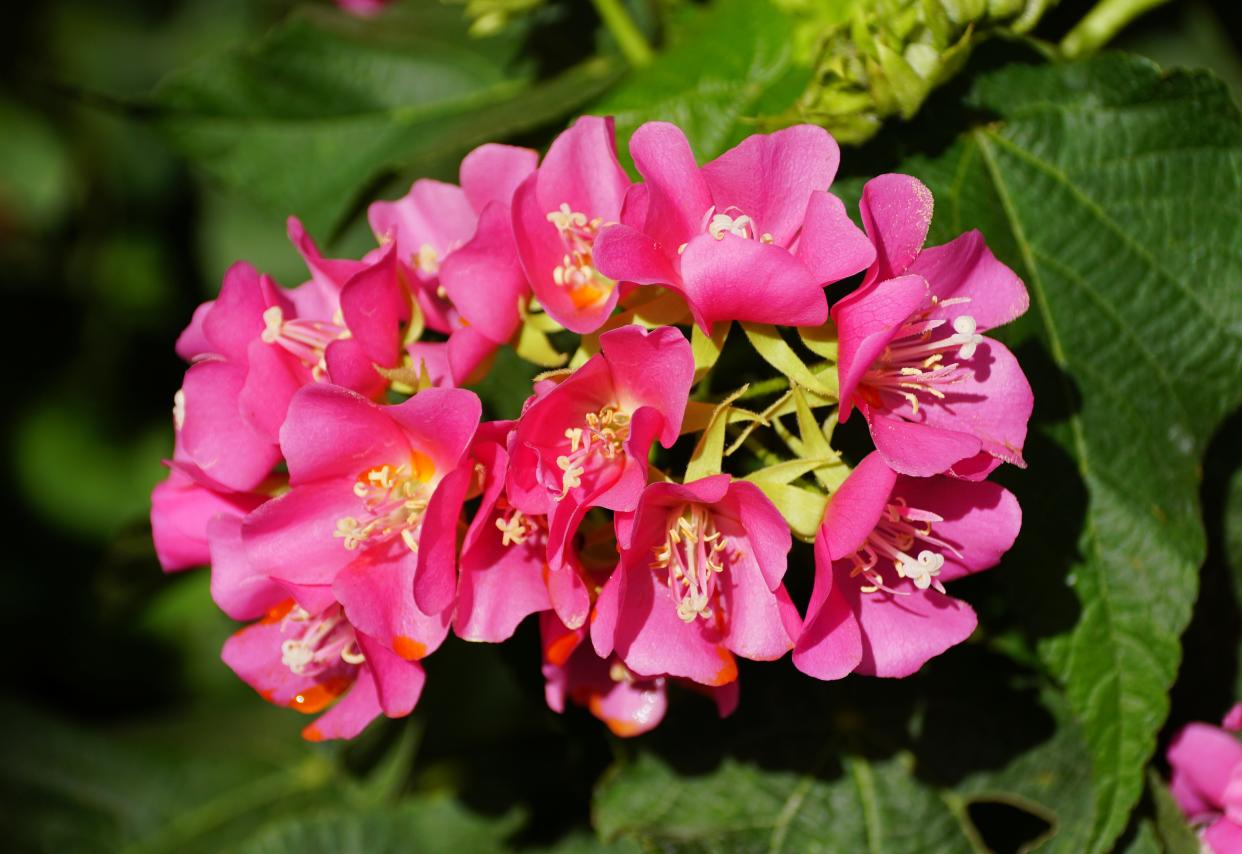CHARLES REYNOLDS: Unfairly shunned shrubs bring color to gardens

Many years ago I heard an interview with renowned clarinetist Artie Shaw. Asked about his success, he admitted there were other, equally talented clarinetists around when he rose to fame. Basically, Shaw said, he was lucky. Fate — always fickle — also affects the popularity of landscape plants, with many outstanding species and varieties languishing in obscurity.
One such plant is the Seminole dombeya, a magnificent, moderately hardy shrub created in the '30s by the USDA Subtropical Horticulture Research Station (Chapman Field) in Miami. The result of hybridizing two varieties of Dombeya burgessiae, Seminole grows 6 to 15 feet tall and wide, producing clustered, deep-pink flowers from autumn into spring.
Also known as tropical hydrangea, Seminole — of African descent — is a densely branched, drought tolerant, evergreen shrub with large, heart-shaped leaves. Its blossoms, which attract butterflies and bees, are most numerous on plants grown in full sun on well-drained sites. Propagation is by warm-season cuttings treated with rooting hormones, though the success rate is reportedly low. Plants are available online.
Also relegated to second-class status is peanut-butter plant (Bunchosia argentea), from Tropical America. A cold-hardy, evergreen shrub or tree, peanut-butter plant ranges from 10 to 30 feet tall in full or part-day sun. This adaptable plant is colorful much of the year, with clusters of yellow flowers in spring and summer followed by 1-inch orange fruit that contains sticky pulp reminiscent of peanut butter blended with honey.
To maintain specimens as large shrubs, prune them in early spring when the possibility of frost has passed. The fruits of peanut-butter plants contain a single seed that — in addition to cuttings — can be used for propagation. Once established, plants are extremely drought tolerant. Plants and seeds are available online.
Another lovely plant — aucuba — is generally unavailable in Central Florida because it’s finicky about conditions. But when it’s cultivated in shady, north-side locations, this slow-growing shrub can be an outstanding landscape plant. Usually offered in beautifully variegated forms, aucuba (A. japonica) is especially attractive planted in combination with ferns and bromeliads.
This upright East Asian shrub rarely exceeds 6 feet and carries its foliage in terminal clusters on branch tips. To grow aucuba in Florida, improve planting sites with organic matter, and maintain a deep mulch. Propagate with cuttings. Numerous variegated forms are available online. Note: aucuba is also called Japanese laurel and gold dust tree.
Charles Reynolds, a Winter Haven resident, has an associate’s degree in horticulture and is a member of Garden Writers Association of America. He can be reached at ballroom16@aol.com
This article originally appeared on The Ledger: Fate affects the popularity of landscape plants,

